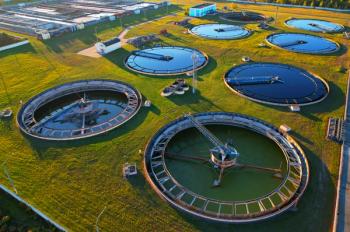
Chemical Profiling of Tire and Artificial Turf Crumb Rubber with UHPLC-HRMS
A multi-faceted approach consisting of targeted quantitation, chemical profiling, and suspect screening via ultra-high performance liquid chromatography-high-resolution mass spectrometry (UHPLC-HRMS) determined the environmental and health risks stemming from crumb rubber recycled from end-of-life tires and repurposed for a variety of uses, including artificial turf fields.
A recent joint study by scientists from Northeastern University (Boston, Massachusetts) and the University of Washington, published in Environmental Science: Processes & Impacts (1), focused on environmental and health risks stemming from crumb rubber. The researchers used a multi-faceted approach consisting of targeted quantitation, chemical profiling, and suspect screening via ultra-high performance liquid chromatography-high-resolution mass spectrometry (UHPLC-HRMS).
Approximately one billion tires reach the end of their useful lives globally every year (2). End-of-life tires (ELTs) are often recycled into crumb rubber that is subsequently repurposed into building materials, shoe soles, gym mats, or thrown away in landfills (3,4). Crumb rubber generated from ELTs poses a threat to environmental and human health based on its widespread use. Of particular concern is the use of ELT crumb rubber as infill for artificial turf fields, due to people being unknowingly exposed to complex mixtures of chemicals while on these fields. The study cites sources reporting that there are over 26 000 artificial turf fields filled with crumb rubber in the United States and Europe combined (5,6).
There is also concern regarding the transport of rubber-related chemicals from artificial turf into the environment. However, existing knowledge does not fully expose the chemical profile, transformation products, and transport pathways of artificial turf crumb rubber, hence the inspiration for this study.
To assess transport pathways, samples underwent three complementary preparations: extraction with organic solvent, water leaching, and a bioaccessibility-based extraction to mimic ingestion. Both quantitative and qualitative information was gained through the utilization of two complementary instrumentation techniques.
The research’s results demonstrated that different sample preparation methods provide different fractions of rubber-derived chemicals. For example, it was learned that by using 6PPD and 6PPD-quinone, pH also controls the transport of compounds in addition to polarity.
Through targeted quantitation, chemical profiling, and suspect screening, the team determined that the aging of artificial turf crumb rubber affects the transformation and transport of rubber-derived chemicals. The rate of formation of transformation products and clustering analysis suggests that the first two years of aging can be critical for the environmental impact of artificial turf fields. However, more studies with controlled aging experiments over longer periods of time are needed to assess this further.
This analysis provides insight into the high chemical complexity of crumb rubber samples of different sample age, and, at the same time, emphasizes the current limitations within the field. While the researchers can utilize chemical profiles to understand complex samples by assessing diversity, abundance, polarity, and molecular mass, they still recognize that the limited compound identification is a major bottleneck in their analysis. They conclude that more extensive non-target screening of tire and artificial turf crumb rubber samples of varied ages is therefore needed to prioritize compounds of interest and give insight into the environmental impact of artificial turf fields.
References
1. McMinn, M. H.; Hu, X.; Poisson, K.; Berger, P.; Pimentel, P.; Zhang, X.; Ashara, P.; Greenfield, E. L.; Eig, J.; Tian, Z. Emerging Investigator Series: In-Depth Chemical Profiling of Tire and Artificial Turf Crumb Rubber: Aging, Transformation Products, and Transport Pathways. Environ. Sci. Process. Impacts. 2024.DOI:
2. Cummins, A. C. Global ELT Management–A Global State of Knowledge on Regulation, Management Systems, Impacts of Recovery and Technologies. 2019.
3. Grammelis , P.; Margaritis, N.;Dallas, P.; Rakopoulos, D.; and Mavrias, G. A Review on Management of End of Life Tires (ELTs) and Alternative Uses of Textile Fibers. Energies, 2021, 14 , 571. DOI:
4. Valentini, F.; Pegoretti, A. End-of-Life Options of Tyres. A review. Adv. Ind. Eng. Polym. Res. 2022, 5, 203 –213. DOI:
5. Perkins, A. N.; Inayat-Hussain, S. H.; Deziel, N. C.; Johnson, C. H.; Ferguson, S. S.; Garcia-Milian, R.; Thompson, D. C.; Vasiliou, V. Evaluation of Potential Carcinogenicity of Organic Chemicals in Synthetic Turf Crumb Rubber, Environ. Res. 2019, 169 , 163 –172. DOI:
6. U. S. Environmental Protection Agency, Synthetic Turf Field Recycled Tire Crumb Rubber Research Under the Federal Research Action Plan Final Report Part 1–Tire Crumb Rubber Characterization, Volume 1, 2019.
Newsletter
Join the global community of analytical scientists who trust LCGC for insights on the latest techniques, trends, and expert solutions in chromatography.





